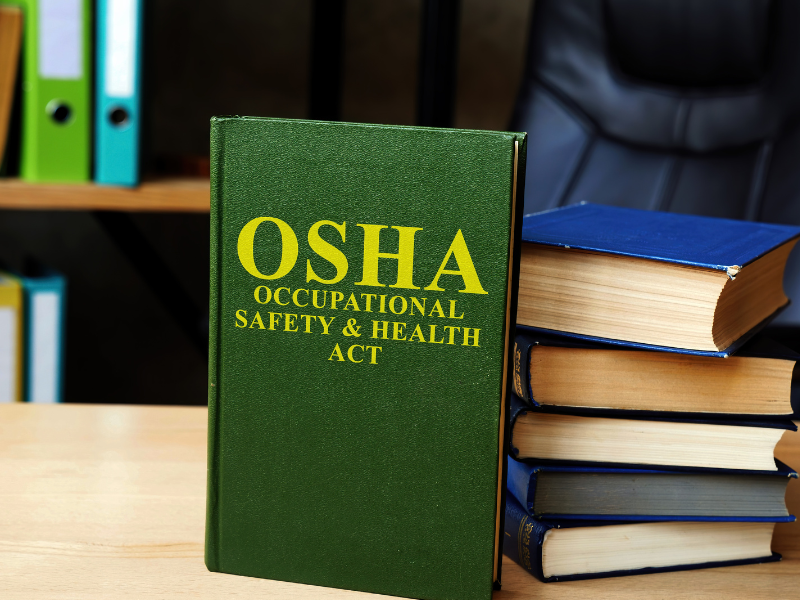The OSHA (Occupational Safety and Health Administration) protects employees from workplace hazards by establishing safety regulations and ensuring compliance. Knowing the possible violations will help create a safe working environment that meets OSHA standards and, at the same time, keeps your business free from paying hefty fines.
Table of Contents

Introduction to OSHA Violations
An OSHA violation happens if, during an inspection, a company or its staff is knowingly or accidentally found to ignore potential and existing safety hazards. There’s no need for an incident to happen.
Depending on its severity, a company will receive either a citation or a fine. Also, the OSHA will only issue a citation if the safety hazard doesn’t put employees at risk. It’s a warning that tells the company about the specific violation they must resolve and the deadline for correcting it.
Suppose the company fails to address the problem and receives the same citation more than once within three years. In that case, it’s considered a repeat offense and cited on the company’s safety record. Repeated violations of the OSHA regulations could lead to serious penalties.
6 Types of OSHA Violations
OSHA classifies violations based on their severity and risk level to employees:
- Serious violations: The safety hazard could result in death or serious physical harm where the employer knew or should have known about it. For example, the employer fails to provide fall protection equipment to employees working at heights.
- Other-than-serious violations: While unlikely to cause death or serious harm, there’s a direct relationship to job safety. An example of this violation is failing to maintain required records and providing adequate training on workplace safety.
- Willful violations: The employer intentionally disregards safety regulations and remains indifferent to employee safety and health. This includes ignoring employee complaints about unsafe working conditions like exposure to heat and toxic substances.
- Repeated violations: Ignoring previous citations or failing to act upon them falls within this violation.
- Failure to abate: This is when an employer fails to correct a previously cited violation within the specified timeframe.
- De Minimis violation: These are violations with no direct or immediate impact on safety and health. Examples include a misplaced fire extinguisher or a missing safety placard in an area with no hazardous material.

Common OSHA Violations in the Workplace
For Fiscal Year 2022, OSHA released the following list of the top 10 most frequently cited standards. This covers violations from October 2021 to September 2022. OSHA releases the top 10 violations after the first week of April to allow enough time to finalize the inspection data.
- Fall Protection General Requirements (1925.501): 5,915 violations
- Hazard Communication (1910.1200): 2,639 violations
- Ladders (1926.1053): 2,449 violations
- Respiratory Protection (1910.134): 2,412 violations
- Scaffolding (1926.451): 2,251 violations
- Control of Hazardous Energy (Lockout/Tagout) (1910.147): 2,139 violations
- Powered Industrial Trucks (1910.178): 1,896 violations
- Fall Protection: Training Requirements (1926.503): 1,762 violations
- Personal Protective and Lifesaving Equipment: Eye and Face Protection (1926.102): 1,572 violations
- Machine Guarding (1910.212): 1,469 violations
Fall protection claims two spots in the top ten with a total of 7,677 violations. The OSHA designs specific standards for employees working on surfaces that are six feet or higher with an unprotected edge. Employers are required to construct and install safety systems to prevent falls and provide adequate employee training on safety practices.
Scaffolding, another high-ranking violation, covers construction workers by requiring employers to design and construct scaffolding for employees working at heights more than 10 feet. Ladders also remain a top safety hazard, with the OSHA requiring companies to have ladder side rails that extend at least 3 feet above the upper surface.
For companies working with hazardous chemicals, you should properly train and communicate with employees about these hazards and provide informative labels on chemical containers. Violations associated with hazard communications are a common citation that ranked second in the list.

OSHA Violation Penalties and Consequences
OSHA imposes a minimum and maximum penalty depending on the type of violation. Here are the penalties as of January 2024.
| Violation Type | Minimum Penalty (per violation) | Maximum Penalty (per violation) |
| Serious | $1,190 | $16,131 |
| Other-than-serious | $0 | $16,131 |
| Willful or Repeated | $11,524 | $161,323 |
| Failture to Abate | N/A | $16,131 per day past the abatement date |
| Posting Requirements | $0 | $16,131 |
Violations are also assigned a gravity score to come up with a GBP (Gravity-Based Penalty). High gravity violation has a GBP of $16,131, while those of moderate gravity have a GBP from $9,218 to $13,828. Meanwhile, a low gravity violation has a GBP of $6,913.
Aside from penalties, violations can also result in jail time and criminal fines.
Reporting OSHA Violations
Employers are required to keep a safe and healthy working environment, and employees have the right to report any violations. They can file a complaint to report injuries, safety issues, and any negative actions taken against them for speaking up. That includes being demoted, disciplined, or dismissed.
The reporting process starts by filing a safety and health complaint, which can be done online, by phone, or by letter, either oral or written in any language. An employee can also ask someone else to file it on their behalf or do it anonymously. The complainant must have it filed no later than six months from when the violation occurred.
Reporting any retaliation or threats for raising a safety or health concern equates to filing a whistleblower complaint. You can’t do this anonymously, but you can ask someone to do it for you. You can also do it online, by phone, or by letter in either any oral or written language. Depending on each statute, you must file this complaint within 30 to 180 days.
Also, you will need to provide the employer’s name, address, and contact information on both occasions.
Ultimately, OSHA violations are serious matters that can lead to grave physical injuries and even death. Compliance with safety and health guidelines is a must to maintain a culture of safety within the workplace.







